First it was Ducati with its 1098R introducing the company’s DTC (Ducati Traction Control) to the masses. The (now) somewhat rudimentary system basically measured the difference in front and rear wheel speeds to determine how much power to pull back. Then BMW took it a step further with its own internally branded version of DTC (Dynamic Traction Control) on its groundbreaking S 1000 RR, which took lean angle into the equation via a gyro sensor. Kawasaki was the first of the Japanese manufacturers to counter with its own S-KTRC system on its latest ZX-10R, utilizing complex algorithms to crunch the information from various sensors to actually predict wheelspin before it occurs, and continually adapt when it does. Needless to say, the level of sophistication with electronic riders aids is growing at an astronomical rate.
We were very impressed with the performance of Aprilia’s RSV4 Factory model last year, with the all-new compact V-four handily beating all comers in our annual Bike of the Year comparison test. The engine’s broad spread of power combines with an ultra-quick-revving character to launch the Aprilia out of corners with unmatched authority — but we couldn’t help wondering what the RSV4 would be like with a refined TC system to assist the rider’s efforts at getting the maximum performance out of the new Italian steed.
Well, the wait wasn’t very long. And not only did Aprilia add adjustable traction control for 2011, but also a slew of other electronic rider aids aimed at providing useful tools for the rider to get around the racetrack (and twisty road) as quickly as possible. Interestingly, there are two models in Aprilia’s USA lineup that are equipped with the company’s latest rider aid technology: the top-of-the-line RSV4 Factory APRC SE (the lengthy acronym representing “Aprilia Performance Ride Control Special Edition”, which we tested here), and the RSV4 APRC, which is the standard R model (sans variable-length intake stacks, Öhlins suspension, forged aluminum wheels of the Factory version) with the APRC electronics.
ATC, AWC, ALC, AQS…WTF?
Last year's RSV4 Factory was equipped with three different riding modes (Road, Sport, Track) that consisted of different engine maps for various conditions. The new Factory APRC SE model includes that same system, but adds an impressive electronics package that is stunning in its breadth and adjustability.
Chief among the numerous rider aids in the APRC package is the ATC (Aprilia Traction Control). Utilizing a two-axis gyroscope as well as accelerometers to measure both longitudinal (front to rear) and lateral (side to side) movement rates, the Aprilia’s powerful Marelli IAW 7SM ECU takes that data along with relative speed between front and rear wheels, gear selected, and — unlike any previous system — the yaw angle change rate (indicating how much and how quickly the rear end is kicked out during a slide) to determine how much wheelspin is acceptable. And unlike most other TC systems, the ATC manipulates the throttle plates — there are no secondary throttle plates, only primaries controlled via the ECU — for initial power reduction, and only resorts to ignition advance reduction as a last resort.
Another innovation with the Aprilia TC system is that it can be adjusted to any one of eight positions (or turned off) on the fly at any time via two small, easily accessible paddles on the left clip-on bar. This means that instead of having to come to a stop (or at least closing the throttle and pulling in the clutch as with the BMW DTC) and then scrolling through the dash menu to get to the TC settings in order to make adjustments, a simple tap with either your index finger or thumb is all that’s required to change the setting.
While other TC systems have some form of wheelie control to help optimize acceleration, the AWC (Aprilia Wheelie Control) system is unique in that it is separately adjustable to one of three settings, or switched off. By measuring forward acceleration and comparing the front/rear wheel speeds, the system determines when a “wheelie condition” is present, and reduces engine torque primarily by controlling ignition advance. Of note is that even if the AWC is turned off, the ATC will only allow a wheelie for a maximum of 30 seconds (sorry stunters), and it will inhibit wheelying if it determines that the lean angle has exceeded 25 degrees.
The new Aprilia is also the first sportbike to be equipped with a launch control function to enable easier race starts. The ALC (Aprilia Launch Control) allows the rider to launch at either 10,000 rpm (in Level 1 or 2) or 9500 rpm (Level 3) by limiting rpm to those levels before the clutch is engaged; just hold the throttle wide open, and concentrate on feeding out the clutch for your start. The ALC also limits wheelspin and wheelying while the clutch is being fed out, and then allows a slight amount of wheel lift for maximum acceleration. The ALC automatically disables itself when the rider either shifts into second gear or exceeds 93 mph. The dashboard also features a new “Race” display that features information more important to a track rider more prominently on the LCD panel.
Another rider aid increasingly making its way onto production sportbikes is the quickshifter, and Aprilia has joined the club with its own AQS (Aprilia Quickshift System). Like most quickshifter systems, the AQS adapts its “power cut” time to how fast the bike is accelerating; both ignition advance and injector timing are pulled back to allow the transmission to accomplish the upshift without allowing excess unburnt fuel to damage the catalyzer.
Other 2011 Updates
Overshadowed by all the electronic upgrades are other important improvements to the RSV4 for 2011 to boost performance. A revised internal oiling setup improves cooling and lubrication at high rpm, and the gear-driven counterbalancer now runs in roller bearings for less friction. First- through third-gear transmission ratios are spaced nine percent closer together for better acceleration, although it requires a taller first gear because of the shorter final drive ratio. A new butterfly exhaust valve and motor are better adapted to work with the ride-by-wire throttle, and the exhaust muffler canister was revised, with a new shape and construction dropping more than four pounds from the previous version. Pirelli has provided a new 200/55-size rear Diablo Supercorsa SP tire to help put the Aprilia's TC-managed power to the ground.
Andiamo!
The Aprilia's ride-by-wire throttle fires up the RSV4 with a quick bark as it automatically opens the throttle plates slightly when you hit the starter button. The 65-degree V-four settles into a fairly high 1500-rpm idle, and swinging a leg over the Aprilia's somewhat diminutive but supportive saddle reveals ergos that are definitely cramped for those over six feet tall. While most of the info on the red-hued LCD is easily distinguishable at a glance, the mirrors are nearly useless (although better than the Ducati 1198's); despite its obvious hard-core sporting intent, the Öhlins suspension is sophisticated and well-sorted enough to allow a fairly acceptable ride on the highway while still remaining composed at an aggressive pace with firm settings. And although Aprilia made some small detail changes in an attempt to improve the RSV4's fuel economy, it still remains a rather thirsty sportbike; hard riding will drop the fuel consumption into the 28-mpg range, and even mellow commuting only brought the numbers up to 33-34 mpg, meaning a range of 145 miles per tank of gas at best.
Tightening up the spacing of the lower three gear ratios has helped overall acceleration, but the side effect of the closer-ratio gearbox is a much taller first gear. Taking off from a stop requires a lot more clutch slip than before, and any low-speed trolling through traffic will have your left hand getting a bit of a workout. The tall first gear also makes hard launches a bit trickier, requiring a deft clutch hand to get the best acceleration. And unless you’re really accelerating hard, it’s probably best to avoid using the AQS and employ the clutch for the first two upshifts, as the kill time is annoyingly long enough at cruising speeds that the gearchange becomes very jerky.
Speaking of launches, the ALC does help — although not so much because of the rev limiter, but more because of the wheelie control. Because of the tall first gear, it’s easy to release the clutch too soon in the heat of a race start, which normally would result in an unintended wheelie; the ALC is able to sense a wheelie occurring, and blunts power at the right moment to keep the wheelie from getting out of hand while still maintaining good acceleration. Launching at 10,000 rpm though (via Level 1 or 2) is a bit much in our opinion, as it tends to be overly hard on the clutch. While Level 3’s 9500-rpm limiter is a bit better, the traction control seems to be really intrusive, making us think that this stage is made for starts in wet conditions.
And the traction control on the Aprilia is probably the best we’ve sampled yet as far as transparency during intervention. While the higher settings from Level 8 to Level 4 are fairly heavy-handed, Level 3 is when the fun starts, as the system will let the rear tire spin just enough to allow some pivoting; and unlike the BMW S 1000 RR that starts to pump on the rear suspension, or the Kawasaki ZX-10R that starts to get a squirmy feeling in the rear, the ATC’s intervention is very subtle. Level 2 and especially Level 1 allow enough wheelspin that you’d better be ready to pick the bike up onto the fat part of the tire in slower corners, otherwise you could be forced to file a flight plan with the FAA if you’re not careful. As with the other TC systems, the ATC is not a failsafe at the lower intervention levels, and will not suffer fools lightly.
Spec-chart mavens will scoff at the Aprilia’s comparatively weak 152-horsepower dyno reading (at least when you’ve got the 170-plus-horsepower class gorilla BMW to contend with) and its middling quarter-mile time (the tall first gear hurts it here), but what isn’t shown in the numbers is how quickly the RSV4 revs and how well-matched the gearbox ratios are to its power. And this isn’t meant to imply that the Aprilia has a narrow powerband, either; as evidenced by the dyno chart, the RSV4 sports a wide, flat torque curve that allows you much more leeway in which gear to use in a certain section. Although we sometimes used the Sport engine mode in traffic, all other times we preferred the right-now throttle response of Track mode, even on the street.
Get the Aprilia in the meat of its powerband though and start banging upshifts with the AQS, and you suddenly find that the distance between corners has shortened much quicker than you’d planned. The RSV4 accelerates with a ferocity off the corners that is easily a match for even the fastest and most powerful inline fours. In fact, its fairly short wheelbase and centralized mass combine with the quick-revving power to make the Aprilia somewhat wheelie-prone — which makes the AWC a welcome rider aid.
The AWC makes all other wheelie control systems seem a bit primitive or inconsistent by comparison. While the BMW tends to be either too heavy-handed (cutting power abruptly) or hands-off, and the Kawasaki’s setup a bit inconsistent, the AWC is much more “intelligent” and subtle in its intervention. Adjustable to three different levels (or shut off), the Aprilia’s wheelie control literally lets you dial in how much wheelie you’d like — and when it does activate, it doesn’t slam the front end to the ground like the BMW. Level 3 basically keeps the front tire on the ground, Level 2 lets the front end loft slightly off corners before gently bringing it back to earth, and Level 1 lets you look like a hero before it reins in the party in a controlled manner. Again, the AWC is not a failsafe in the lower levels; it is possible to loop over backwards in the lower gears going over major elevation changes if you’re not careful.
While the Aprilia might suffer at the end of a long straight to more powerful bikes, it will make up most of that time on the brakes and on corner entry. The Brembo monobloc radial-mount calipers and dual 320mm discs provide excellent stopping power and feel, although we wished for a bit more progressiveness to their response; a bit more lever effort that we’d like was required for major stopping power. Nonetheless, the powerful brakes work with what is probably the best stock slipper clutch setup we’ve tried so far and the RSV4’s superb front-end feel to allow banzai corner entries that would be tad risky on another bike.
Combine all this with what is probably the most agile literbike chassis in the class, and you have the ingredients for a bike that is hard to fault. While not the lightest-steering bike around, once the turn is initiated, the RSV4 simply carves into corners with a precision that borders on telepathic. Line changes can be made with barely any effort, and the options in the corner that open up as a result add up to more speed on the exit.
Racing Technology for the Masses
It's pretty obvious that we were highly impressed with the Aprilia RSV4 Factory APRC SE (despite its elongated moniker). The RSV4 Factory was already a fantastic bike, but the addition of the most refined electronic rider aid package we've yet tested has put its performance on a whole new level. Yes, the entrance fee is a bit steep at $22,499 MSRP, but this is the closest yet to current racing technology that you can buy. And the fact that it's included on a bike that's already a superb performer easily makes it worth it in our opinion. SR
Test Notes:
2011 Aprilia RSV4 Factory APRC SE
** + The best electronic rider aid package
+ Superb chassis, suspension
+ Wide powerband
– Cramped ergos
– Could use a little more top-end
– Brakes a little high-effort
x Sure it's a bit pricey, but well worth it for what you're getting
**Suggested Suspension Settings
Front: Spring preload — 7.5 turns out from full stiff; rebound damping — 12 clicks from full stiff; compression damping — 11 clicks out from full stiff; ride height — 2 lines showing
**Rear: **Spring preload — 10mm thread showing; rebound damping — 14 clicks out from full stiff; compression damping — 10 clicks out from full stiff; ride height — 0mm thread showing, top eccentric mount raised position (+15mm)
**OPINIONS
Eric Nugent
** First word that comes to mind after riding the Aprilia RSV4 Factory APRC SE around town for the day — WOW! Surprisingly more comfortable around town that one would expect, and once into the canyons, the surprises keep coming…monster speed off the corners, and brakes that are so good you almost have to laugh.
While the extensive menu options that need to be accessed — from traction control, wheelie control and playing with the launch control — may seem complicated, within five minutes we had the system pretty wired, and I liked all the option displays. Not a big fan of the tall first gear, but I’m a huge fan of the chassis and suspension. And the quick shifter is like frosting on the cake. Only downfall for me is the cost of the bike: at just over $22K, I can honestly say I won’t be one of the 350 putting one of these beauties in my garage.
Bradley Adams
If I was horse jockey size, I'd probably love the Aprilia. The bike's traction control and wheelie control are exceptional and go almost unnoticed, allowing you to put the power to the ground and drive out of corners with ease. You can't fault the bike's quick shifter or power either; each knock on the shift lever was matched with a seamless shift. Pair that with the RSV4's unreal amount of torque and wide power band and you have a bike that is extremely enticing on and off the track. Plus, the electronics interface is extremely intuitive and took just minutes to get a hang of. But I'm not horse jockey size. I'm 6'2", and things are admittedly a little cramped for me on the RSV4, which makes me lean more towards the word like than love when describing this alphabet soup Aprilia, although it does have one of the best electronics package to date.
Kent Kunitsugu
While the electronic rider aids before the APRC were great for their time, it's pretty apparent that technology sector is progressing just as fast as consumer electronics. The Aprilia system is hands down the most advanced and refined electronics package I've ever used; it's a true "rider aid" system, rather than the electronic nanny or hidden crutch like so many fear. Look, I'm for improving rider skill as much as anyone, but when properly set for your skill level, the APRC is so transparent that it's easy to forget it's there until it saves your bacon, which is how these systems were intended in the first place. And it is not some failsafe crutch that will allow poorly skilled riders to magically run faster on the road or quicker lap times; ham-fisted moves will still put the rider on his head. Plus you can turn them off if desired. If this is the future, bring it on!










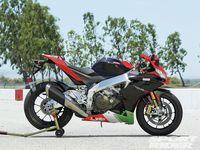
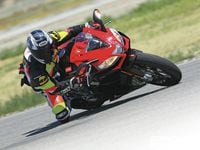

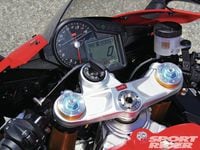
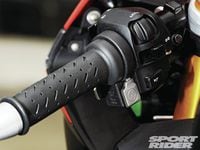
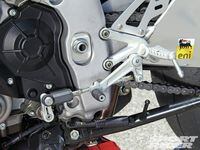
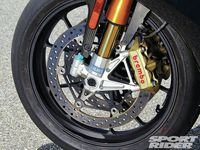
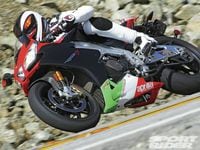
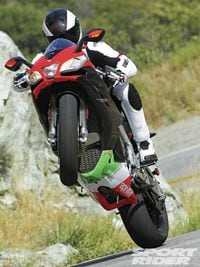
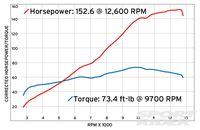
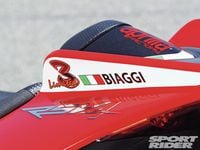
/cloudfront-us-east-1.images.arcpublishing.com/octane/X5TB7BDV4BA2RPSY54ZGK27RP4.jpg)
/cloudfront-us-east-1.images.arcpublishing.com/octane/REUHOJXRDBGZ5IHBYZCCBCISPA.jpg)
/cloudfront-us-east-1.images.arcpublishing.com/octane/52LGJTCKBFEHDF7S7H4CVUIMGM.jpg)
/cloudfront-us-east-1.images.arcpublishing.com/octane/YMWAIPIPSJAOXOU3QMJMGH37OM.jpg)


/cloudfront-us-east-1.images.arcpublishing.com/octane/EJ6KZRGAYBCVXNL2PJXL37UVWQ.jpg)
/cloudfront-us-east-1.images.arcpublishing.com/octane/AAN4TI76M5H5JMUVEIGASWXBDU.jpg)
/cloudfront-us-east-1.images.arcpublishing.com/octane/P3RXD2UCPFF37CMB7CHPVKXORY.jpg)
/cloudfront-us-east-1.images.arcpublishing.com/octane/VZEG2EJI2RDFZNHLRZMU56MD3Q.jpg)
/cloudfront-us-east-1.images.arcpublishing.com/octane/GVJQO5FFOFBWNGODOBRB4FBAW4.jpg)
/cloudfront-us-east-1.images.arcpublishing.com/octane/BIVAK2SFIBDJJM25E7I5VU2FJE.jpg)
/cloudfront-us-east-1.images.arcpublishing.com/octane/CH5VX52UG5CFHOVH5A6UYEFWWA.jpg)
/cloudfront-us-east-1.images.arcpublishing.com/octane/ZVGJNGZRU5C33N7KN23BBFKSC4.jpg)

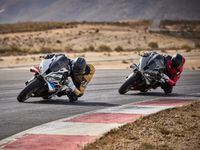
/cloudfront-us-east-1.images.arcpublishing.com/octane/CZ5OM3E43ZEXJHY7LCYXCHLIKI.jpg)
/cloudfront-us-east-1.images.arcpublishing.com/octane/DF5T4K5KPZFJXFCTGPYR77PKJM.jpg)
/cloudfront-us-east-1.images.arcpublishing.com/octane/RMCT2KVQBJHBZMRTSLOVPMOILU.jpg)

/cloudfront-us-east-1.images.arcpublishing.com/octane/K45KB2XHQVA65DX7VN4ZSMT2BI.jpg)
/cloudfront-us-east-1.images.arcpublishing.com/octane/FNHXQQ56BRD7TO4YIJ453PNG2M.jpg)
/cloudfront-us-east-1.images.arcpublishing.com/octane/OIKJC4JA3ZH7BMKUGWYKBIY5FA.jpg)
/cloudfront-us-east-1.images.arcpublishing.com/octane/MT2SAEWY6FDXFBYSLDE3AEFDTM.jpg)